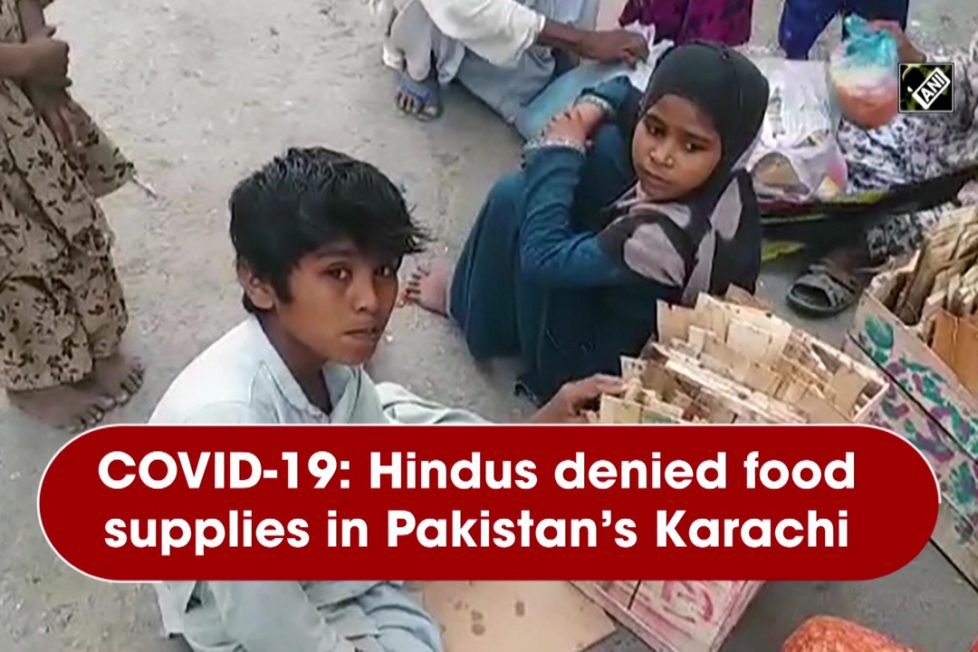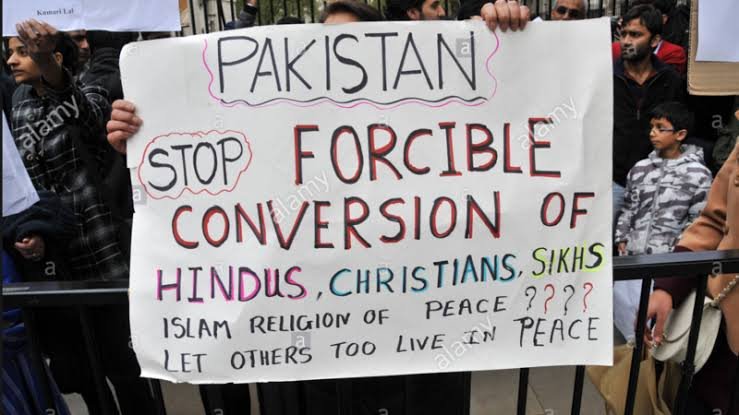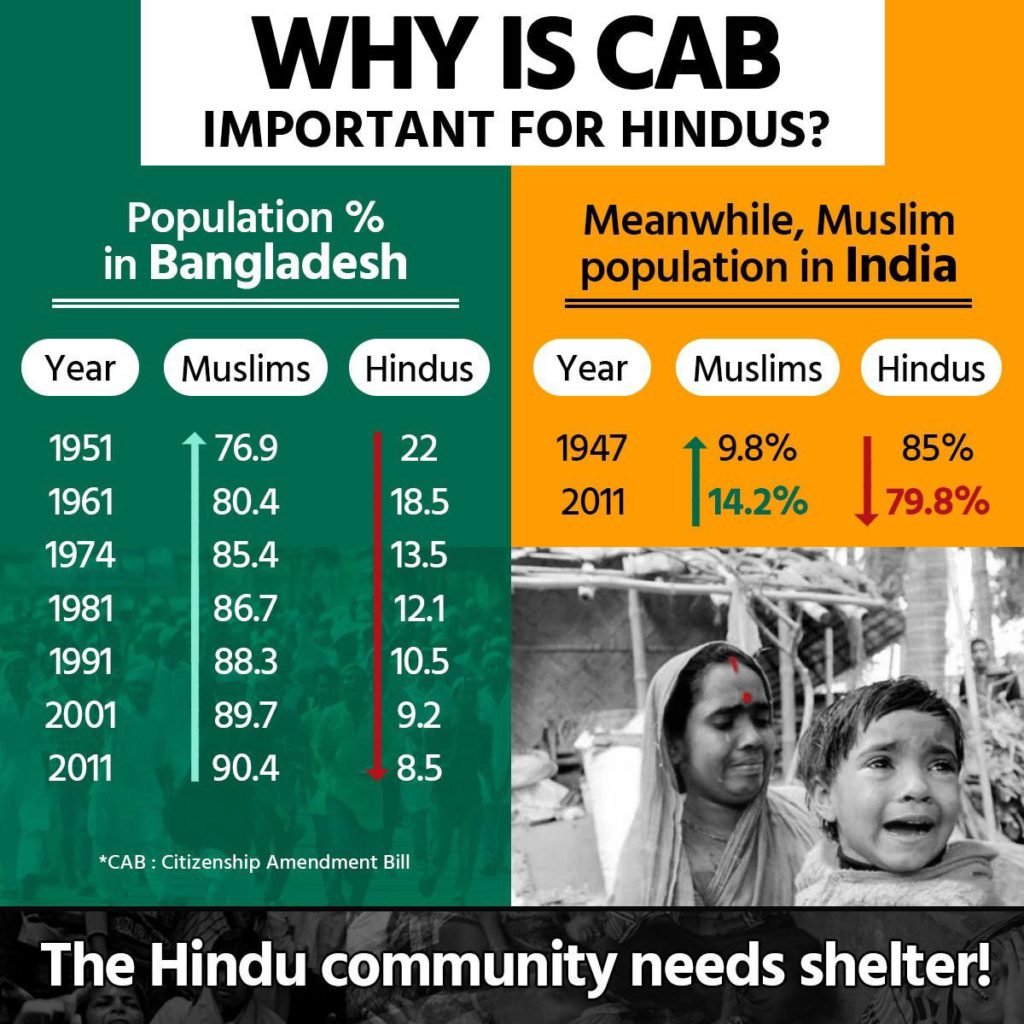Left To Either Convert or Die… Hindus and Sikhs of Pakistan and Afghanistan Struggle Hard To Survive Amid The Corona Pandemic


The liberal lobby’s love for a fake, one-sided version of secularism feeds on open Hindu hatred and complete silence over issues affecting Hindus across the world. This was nakedly visible during the anti-CAA protests that rocked the country in early 2020. While on the one hand, they have always projected themselves to be the messiahs of the poor, their heart does not bleed at the plight of those Hindu and Sikh families across the border who are struggling everyday to survive, to make ends meet, in a monotheistic theocratic state. Ironic indeed! The battle of these families in Pakistan and Afghanistan has been a question of existential survival, of protecting their faith from the monster called Islam, and living their lives with a basic minimum sense of dignity. The CAA is definitely a compensatory piece of legislation for these communities, but which came in too late!
It was not so long ago that video clips of a mass religious conversion ceremony of several dozens of poor, desperate Hindu families in the Badin district of Sindh province in southern Pakistan went viral across different media channels of Pakistan. Interestingly, this ceremony took place in a province which had once been a melting pot of different religions, i.e. Sindh. Unfortunately, in the recent decades, people belonging to the minority Hindu and Sikh communities in Sindh have fled in droves to other countries seeking shelter and refuge from Islamic persecution. They have been the victims of state-sponsored violence and religious discrimination, besides constantly having to face the risk of being accused of blasphemy. Blasphemy is considered to be a capital crime in the Islamic Republic of Pakistan, if anyone dares to speak out against Islam or question its tenets.

During the devastating floods of 2010 in Sindh which left thousands homeless and starving, Hindus were not allowed to sit with Muslims at soup kitchens and they were at the receiving-end of government aid compared to their Muslim counterparts. But, any discussion of the pitiful condition of the dwindling Hindu minority of Pakistan and their hand-to-mouth existence has never been the cup of tea of the Lutyens’ media houses and the liberal-secular cabal of Indian “intellectuals”. Well, coming back to the video, it was a terribly heart-rending one which showed the Hindus performing the Islamic prayer rituals awkwardly, marking their entry into an Abrahamic faith system while leaving behind the gods and goddesses of their own pantheon. They were forcefully made to recite Arabic phrases as a part of their conversion rituals, after which the men and boys were circumcised, much to the delight of hard-liner Muslims.
Although there is lack of accurate data, but what cannot be denied is the fact that the number of such conversions are massively increasing in Pakistan with every passing day. Since Hindus and Sikhs are treated as second-class citizens in Pakistan, they are often systematically discriminated against in almost every aspect of life – access to housing facilities, jobs, and benefits of government welfare schemes. Conversions have mostly been the result of poverty and desperation, undertaken with the objective of escaping discrimination and targeted killings and sectarian violence. In the words of one Farahnaz Ispahani, a former Pakistani lawmaker who is now a senior fellow at the Washington-based research group called Religious Freedom Institute, “The dehumanisation of minorities coupled with these very scary times that we are living in – a weak economy and now the pandemic – we may see a raft of people converting to Islam in order to stave off violence or hunger or just to live to see another day.”

Poor low-caste Hindu families, mostly illiterate, are the most vulnerable among religious minorities in Pakistan. Often the victims of bonded labour, they have become an easy prey for exploitation in the hands of Islamic seminaries and mosques, charities and traders who lure them to convert into Islam. Although the inhuman practice of bonded labour was outlawed in 1992, the practice is still prevalent in many areas of Pakistan. As per estimates of the Global Slavery Index, some 3 million Pakistanis live in debt servitude across the country. Rich Muslim landlords often trap poor Hindus into such bondage by providing hefty loans which they know very well can never be repaid. They and their families are then forced to work off the debt, with their women having to pay a heavy price in the form of sexual abuse and molestation.
Taking advantage of the helplessness of the minorities, proselytising Muslim clerics and different organisations masquerading as “charity” groups in Pakistan have been at the forefront of offering incentives of jobs and land to the poor and impoverished members of these communities if they convert. Several seminaries and madarsas in Karachi have also set up separate departments to guide the new converts and provide counsel in legal and financial matters. It is a game of pure money and is executed in much the same manner as Christian missionaries carry out their sinister religious conversion designs under the guise of “healing” programmes and “charitable” activities among largely poor, vulnerable Hindu communities in India. In this process, proselytisers not only help add allure to their faith among non-believers but also honey-trap more and more people into accepting a foreign faith, abandoning their own. Although Islamic clerics in Pakistan are of the view that most of the religious conversions are voluntary, but the choice has not really been a genuinely informed one.
Amidst the coronavirus pandemic and Pakistan’s economy almost on the brink of a collapse, what has often been overlooked is the ever-increasing financial pressure on the minority communities, notably the Hindus and Sikhs, who are also among the poorest sections of people in the Islamic country. As predicted by the World Bank, Pakistan’s economy will contract by 1.3% in the 2020 fiscal year because of the COVID-19 pandemic and upto 18 million of Pakistan’s 74 million jobs may be lost. It signals a hopelessly bleak future ahead for the already negligible population of minorities! There are fears that the coronavirus pandemic induced economic devastation may lead to another vicious cycle of sectarian violence against the minorities, which shall further intensify the pressure on them to convert.
At the time of the Partition in 1947, Hindus constituted almost 20.5% of the population of the areas that now form Pakistan. In the decades that followed, their percentage shrank rapidly. Going by the Census data of 1998 which has been the last government census uptil now to classify people in Pakistan on the basis of religion, Hindus formed just 1.6% of the country’s population. Taking into account the fact that Census data has never been so reliable, several estimates are of the opinion that Pakistan’s Hindu population has witnessed a dramatic decline in the past two decades. Forced conversions of Hindu girls and women to Islam on the pretext of marriage that takes place either through kidnapping or coercion have almost become a regular phenomena throughout Pakistan.
The same has been the scenario in Afghanistan too, where the already decreasing population of Hindus and Sikhs is further shrinking to its lowest levels in the recent times. Growing threats from the local ISIS affiliate have made matters worse, leading many poor and insecure Hindu and Sikh families to leave the country of their birth in order to escape the looming threat of Islamic terrorists. It needs to be recalled here that the Sikhs were once a thriving community in Afghanistan consisting of as many as 250,000 members. But, at present, their number counts fewer than 700. It is an extremely sad story of religious extermination resulting from deep-rooted discrimination in the conservative Muslim-majority country. In March 2020, ISIS gunmen and suicide bombers had attacked the Har Rai Sahib Gurudwara in Kabul, Afghanistan which killed at least 25 Sikhs.
In Afghanistan, both the Hindu and the Sikh communities are interwoven around ties of close kinship that have resulted from their tiny size. They both gather under one roof to perform worship, each following their own faith. But, with the government failing to provide adequate protection to the members of these communities and targeted attacks by the ISIS group, the possibility of their almost near-complete exodus from Afghanistan in the coming times cannot be denied. Fearing for their safety, several Sikhs have already left for India, from where they eventually plan to move on to a third country. Although the Afghan government had decided in the year 2010 to dedicate a chair in the National Assembly to religious minorities, the move has remained a mere tokenism. The government has not only been able to grant powers of political representation to the Hindus and Sikhs residing in Afghanistan but also failed to provide them security of life and livelihood.

After the US invasion of Afghanistan in 2001, the homes of several Hindu and Sikh families were seized by warlords, forcing them to live in one of the two Sikh temples in the Afghan capital of Kabul. Under the rule of the Taliban in the late 1990s, Hindus and Sikhs were asked to identify themselves by wearing yellow armbands, which was however, not enforced as a result of a global outcry against such a norm. Members of these communities have failed to reclaim their homes, businesses and religious places of worship that were seized illegally years ago. Several Hindu temples in Kabul’s old city were destroyed during the course of brutal fighting that took place between rival warlords from 1992-1996. This was one of the deadliest massacres that drove out scores of Hindu and Sikh Afghans from Afghanistan.
Community leaders have slammed recent Afghan governments for failing to step up security in the face of the lurking Jihadi threat. Besides the March 2020 attack on the Sikh Gurudwara, a 2018 ISIS suicide attack in the city of Jalalabad had led to the death of almost 19 people, most of them Sikhs. It also included a long-time Sikh leader who had nominated himself for the Afghan Parliament. In fact, the last 3-4 years have been the worst period for all Afghans, especially so for Sikhs and Hindus. This has also coincided with the coming to power of the Narendra Modi-led BJP Government at the Centre and the tabling of the Citizenship Amendment Bill (CAB), 2016 in the Parliament, which is now known as the Citizenship Amendment Act (CAA), 2019 after it was passed by both the two Houses of the Parliament with the requisite majority.
A report entitled ‘International Religious Freedom’ published by the US Department of State in 2007 on Afghanistan had clearly expressed shock and concern over the pitiable conditions of the minorities residing in this country. It says, “There are roughly 3,000 Sikh and Hindu believers….In the past, small communities of Hindus, Sikhs, Jews and Christians lived in the country; however, most of the members of these communities had migrated during the years of the civil war and the rule of the Taliban. Even at their peak, these non-Muslims constituted less than 1% of the population. Most of the small Sikh and Hindu populations, which once numbered approximately 50,000 persons, took refuge abroad during the many years of the conflict.”
An honest academic discussion on the rise of radical Islamic terrorism in the Indian subcontinent and beyond, with Pakistan being its nerve-centre, cannot ignore the religious Jihad unleashed upon the non-believers of Islam/kafirs by Islamists. The exodus of Kashmiri Hindus from the Kashmir Valley in the early 1990s has rightly garnered the much-deserved worldwide attention. It is time now that the painful stories of the Hindus and Sikhs of Pakistan and Afghanistan are also widely publicised and discussed, through literature, cinema, music, etc. The CAA made a historic beginning, but in order to set the narrative in favour of the Hindu cause, the matter needs to be continuously pursued in the public domain utilising all the available means at hand.
References:
DISCLAIMER: The author is solely responsible for the views expressed in this article. The author carries the responsibility for citing and/or licensing of images utilized within the text.
